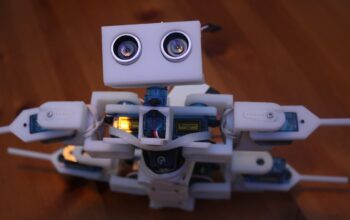Imagine a university where AI chatbots help students master calculus, or a bank where virtual assistants handle thousands of customer inquiries daily. Behind these transformations? Modern personal computers—now gateways to enterprise-scale innovation. Here’s how everyday laptops and workstations are fueling real-world digital overhauls.
University of Sydney’s Homework Heroes A self-serve AI platform built on Azure OpenAI lets faculty create custom chatbots for everything from career simulations to assignment help. “It’s like giving every teacher a tireless TA who knows every textbook by heart,” says an administrator. The initiative, run on standard developer workstations, has automated routine student queries while freeing staff for high-value mentoring.
Telkomsel’s Call Center Revolution The Indonesian telecom giant tackled overflowing customer lines with an Azure-powered virtual assistant. Everyday office computers became command centers for AI that handles bill payments, service upgrades, and troubleshooting. Result? Chatbot interactions jumped from 19% to 45% of total service requests, with call volumes dropping from 8,000 to 1,000 daily.
Van Lanschot Kempen’s Meetings 2.0 This Dutch financial firm equipped teams with Microsoft 365 Copilot on their standard-issue laptops. The AI helper drafts emails, summarizes meetings, and generates reports—shaving hours off weekly tasks. “It’s not about replacing people,” notes a project lead. “It’s letting our staff focus on what humans do best: building client trust.”
Trusting Social’s Banking Brains Using Azure AI tools on developer PCs, this fintech built AI agents that help banks assess loan risks and personalize services. “Think of it as giving every loan officer a data scientist sidekick,” explains their CTO. The system now assists millions of customers across Asia, all powered by cloud-connected office computers.
Legal & General’s Cloud Kitchen Migrating to Microsoft Azure meant rethinking how staff interact with data. Cloud-native apps now let analysts pull real-time reports from any laptop, while hybrid cloud setups—managed via PCs—ensure compliance. “Our machines became control panels for the entire digital infrastructure,” describes an IT head.
References:
- https://careers.legalandgeneral.com/blog/2025-4/key-trends-every-it-professional-should-know
- https://www.autodesk.com/blogs/water/2025/04/24/3-top-trends-from-the-2025-state-of-design-make-report/
- https://www2.deloitte.com/us/en/insights/industry/technology/technology-media-telecom-outlooks/2025-media-entertainment-outlook.html
- https://blogs.microsoft.com/blog/2025/04/23/the-2025-annual-work-trend-index-the-frontier-firm-is-born/
- https://www.accenture.com/us-en/insights/high-tech/technology-vision
- https://itec32.com/how-real-world-businesses-are-transforming-with-ai-with-50-new-stories/
- https://en.wikipedia.org/wiki/Internet
- https://www.cio.com/article/3961083/how-to-plan-for-a-new-business-technology-operating-model.html



